Graham Reid | | 5 min read
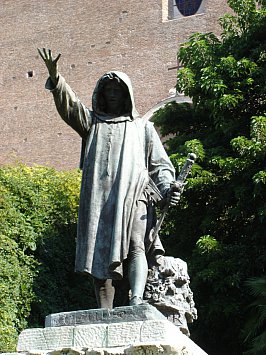
Rome hadn't seen anything like him before, this strutting little fanatic who was so gifted with words he could move a crowd to mass action.
A born propagandist, he was often invited into the homes of the wealthy for their amusement as they listened to him rant over the dinner table. But when he finally took complete power---without a hand raised against him---he ruled with ruthless authority.
Former dinner party hosts fled in terror.
Then the tide of history---and the people---tuned against him. After the mob tore him apart his body was hung upside down in ignominy.
Despite the broad familiarity of this story, this vain little man was not the fascist dictator Benito Mussolini, but Cola de Rienzi born 700 years ago and briefly the self-appointed ``Tribune and Liberator of the Holy Roman Republic''.
Rienzi's remarkably life barely makes a footnote in the history books, yet there is his statute on the Capitoline Hill by the steps to the right of the monument to Victor Emmanuel.
In stone, Rienzi cuts a peculiar figure: squat and oddly disproportionate, his face hidden by a hood, the right arm outstretched in some gesture of appeal or as if grasping something imaginary. The immortality he craved possibly? If so, this stone figure shows he achieved it.
In a city of statues, however, his is an unremarkable one and visitors to Victor Emmanuel invariably walk past it without a first, let alone a second, glance.
It is symptomatic of how a vibrant history informs every corner in this ancient city that Rienzi, who commanded Rome for a flamboyant, if brief, seven months should be so relegated in the imagination.
 But his is an extraordinary story and
one with resonances in modern fascism. In an echo across history
Wagner's youthful opera Rienzi, about this mad despot and canny
propagandist, impressed the young Adolph Hitler.
But his is an extraordinary story and
one with resonances in modern fascism. In an echo across history
Wagner's youthful opera Rienzi, about this mad despot and canny
propagandist, impressed the young Adolph Hitler.
In later life Hitler is reported to have said his vision for the Third Reich was formed after having seen a production of the opera: ``In that moment, it began.''
Born around 1313 Rienzi was the son of a publican, but one who learned classical Latin. He wandered among the ruins dreaming of the glory of the Empire and imagining himself a Caesar.
At 30, he was sent by Rome's inn-keepers as an envoy to Avignon to congratulate the new pope, Clement VI, and beg him to return to Rome.
It seems the pope took a liking to this eloquent and handsome emissary and kept him around the palace for a year. When he finally returned to Rome Rienzi began secretly organising the citizenry to overthrow the nobility he so despised, to establish a peaceful, citizen-led state and, in a prescient vision, eventually a united Italy.
On the morning of May 20 1347 when many nobles were away from the city, the bell on the Capitol rang and the citizenry took to the streets in a planned uprising. Rienzi, in full armour and before a cheering crowd, declared his programme: murderers to be executed; roads made safe and robbers apprehended; all new law cases to be heard within 15 days; each district having its own home guard; and other such popular proposals.
He was given supreme power, returning nobles were forced to swear allegiance to him, and within a month he wrote to the Pope assuring him the streets and woods were safe. If Rienzi had lived in modern times doubtless he would have had trains running on time.
But his vanity was also unbridled: he would strut around in scarlet robes and golden spurs; devised his own elaborate coronation; and during a banquet suddenly arrested all the remaining nobles and had them prepared for execution. The following morning however he delivered them a speech on the virtues of forgiveness---and invited them to dinner. The nobles left vowing revenge.
Finally, even the citizenry wearied of the pomp and propaganda, and when the pope commanded they overthrow him, they rose up and Rienzi fled.
Curiously enough, this wasn't the last Rome saw of him. Seven years later the new pope, Innocent VI, saw in him a possible solution to the ongoing anarchy in Rome. Rienzi was dispatched back to city with a papal army.
But he was a much-changed man. Over-weight, penniless and dedicated to a programme of reform, he cajoled the citizens to greatness when they only wanted parties and pageantry. Fatally, he raised taxes.
For the second time the people rose up against him.
They dragged him to the steps of Santa Maria in Aracoeli where criminals were executed and for an hour he waited for someone to stick a blade into him. Cecco del Vecchio finally did the honours.
The body was strung up by the heels at San Marcello for two days and on the third cut down and burnt on a heap of thistles.
Rienzi's dramatic but short career is full of resonances of Mussolini and is instructive about the fickle nature of Romans.
But influential though he might have been, Rienzi's story is seldom talked about, even by guides who take their groups past his peculiar little statue.
To find out about him it is necessary to visit Rome in the company of an intelligent, witty and well-informed companion. Someone like the late HV Morton and more particularly his book A Traveller in Rome first published in 1957 in which the story of Rienzi is just one the fascinating minutiae this doyen of travel writers casually drops.
Henry Vollam Morton, a patrician Englishman who seldom invited the familiarity of being addressed by his Christian name, was born at the end of the 19th century and died in 1979.
He was a passionate traveller and wrote unassumingly intelligent and informative books: half a dozen about London; almost as many about his travels in the footsteps of Christ through what was then called the Holy Land; and on the roads St Paul walked.
His “In Search of . . .” series took him around Scotland, Ireland, South Africa, England and Wales. But Italy was his greatest love and on publication his A Traveller in Southern Italy was described as ``easily this century's best book [on the region].''
Morton is an excellent travelling companion and I had A Traveller in Rome with me every day as I walked the ancient stones of this city. Through him I learned exactly where Julius Caesar had been murdered (not on the Capitol as Shakespeare had it, nor in the Forum as some tour guides tell you, but in the new theatre that Pompey had built about a kilometre away), and that Septimus Sevirus---whose triumphal arch dominates the Forum---was one of the first explorers of the wild and miserable Scotland.
And that one of the two founders of the famous Babington Tea Rooms at the foot of the Spanish Steps was one Miss Isabel Cargill ``of Dunedin, New Zealand, whose grandfather was the founder of Otago and whose ancestor was Donald Cargill, the Covenantor''.
Here is a typically informative Morton digression as he recounts the history and practices of the vestal Virgins: ``A sad tale is revealed. The marble palace was an ice chest in cold weather. It was surrounded by tall temples and built against the side of the Palatine Hill. If you go there in the afternoon, you will see that it is one of the first places to fall into the shadow as the sun passes behind the hill; and it must have done so even earlier when the Palatine was covered in tall palaces.
``In an attempt to fight the cold and damp, the Vestals put in double walls on the side of the hill and raised floors everywhere, sometimes with very oddly sawn-off amphorae. And between these rows of halved wine-jars the hot air was made to circulate from a central furnace. It is melancholy to reflect that honour and sanctity must have been accompanied by rheumatism and arthritis.''
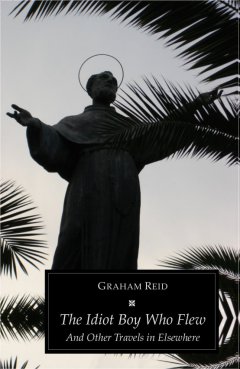 Morton's books were long out of
circulation---I found my tattered hardback copies in secondhand shops
without too much difficulty however---but some (the excellent A
Traveller in Rome) among them) were reprinted a few years ago.
Morton's books were long out of
circulation---I found my tattered hardback copies in secondhand shops
without too much difficulty however---but some (the excellent A
Traveller in Rome) among them) were reprinted a few years ago.
He had fallen into obscurity as a new generation of travel writers headed off to more exotic regions to write about themselves and their responses. Morton rarely indulged in such self-centred frivolity.
His opinion hardly seemed to matter, it was the history in the stones and pathways he was interested in.
And, in almost two dozen refined and crafted books, even now he continues to bring the stones – and statues like that peculiar, overlooked Rienzi piece -- to life again.
This article was a chapter in the travel collection The Idiot Boy Who Flew.

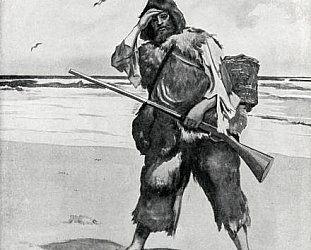
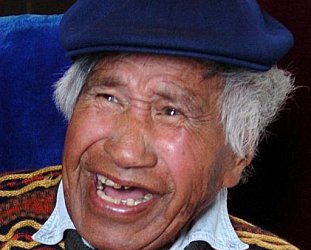
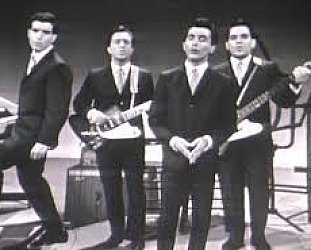

post a comment